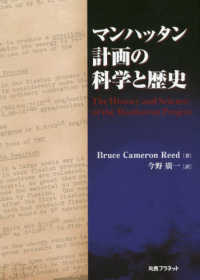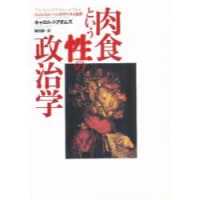基本説明
Like Roland Barthes' well-known book, "L'empire des signes", this volume contains essays dealing with certain aspects of Japanese culture.
Full Description
Like Roland Barthes' well-known book, L'Empire des signes, from which the title of the present collection is taken, this volume contains essays dealing with certain aspects of Japanese culture.
Contents
1. Introduction: Semiotics and Culture (by Ikegami, Yoshihiko); 2. The Notion of the Sign in Japanese Tradition (by Toyama, Tomonori); 3. Creative Interpretation of the Text and the Japanese Mentality (by Arima, Michiko); 4. Characters that Represent, Reflect, and Translate Culture in the Context of the Revolution in Modern Art (by Mukai, Shutaro); 5. The Images of Japanese Landscapes: A Typological Approach (by Higuchi, Tadahiko); 6. Semiosis in Architecture: A Systemic Analysis of the Traditional Towntextures in Japan (by Monnai, Teruyuki); 7. Intertextuality in Japanese Traditional Music (by Tokumaru, Yoshihiko); 8. The Forbidden Chamber" Motif in a Japanese Fairy Tale (by Kawai, Hayao); 9. Aspects of Japanese Nonverbal Behavior in Relation to Traditional Culture (by Tohyama, Yasuko); 10. Cosmological Dimension of the Japanese Theater (by Yamaguchi, Masao); 11. Literary Semiotics of Suburban Houses (by Kawasaki, Toshihiko); 12. The Ghost Trio: Beckett, Yeats, and Noh (by Takahashi, Yasunari); 13. A Semiotic Approach to the Role of Paritta in the Buddhist Ritual (by Aoki, Tamotsu); 14. "Do-language and Become-language": Two Contrasting Types of Linguistic Representation (by Ikegami, Yoshihiko); 15. Index
















